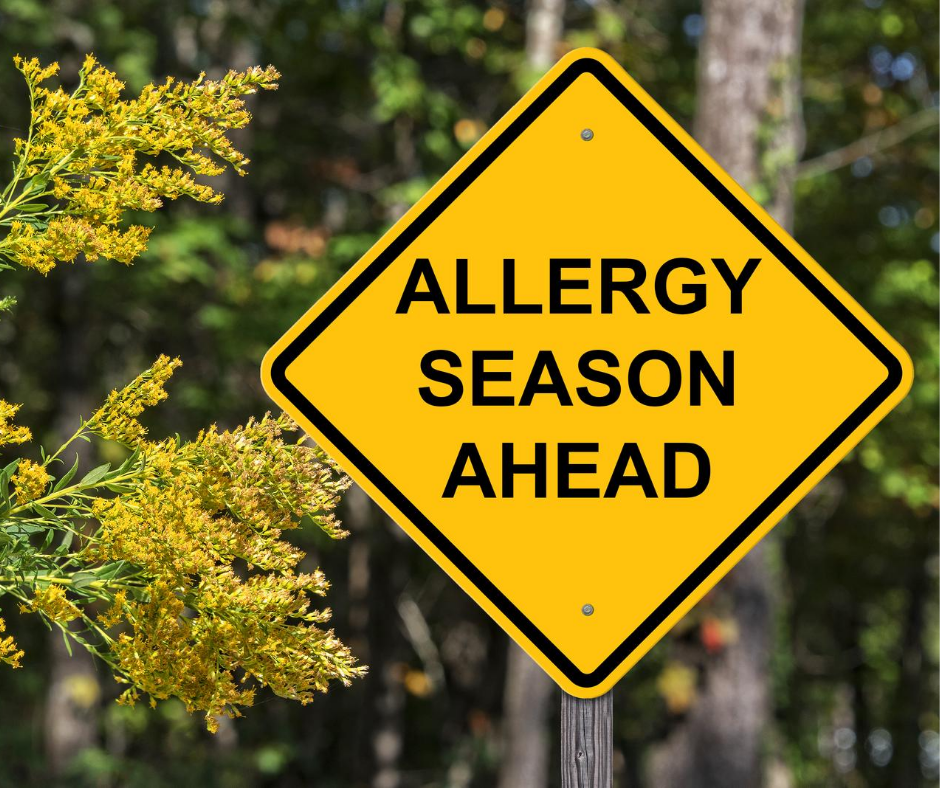For those who suffer from seasonal allergies, fall brings some predictable symptoms—annoying, but otherwise of little concern. The situation is different in 2020, though, as seasonal allergy sufferers wonder whether the symptoms they’re experiencing are the norm or actually symptoms of COVID-19 that should cause concern.
What causes seasonal allergies?
Seasonal allergies, also referred to as hay fever and, more officially, as “allergic rhinitis, is our body’s natural reaction to some type of irritant—in this case ragweed pollen. Mold is another culprit that emerges in the fall as trees begin to shed their leaves and mold begins to form. As fall approaches, usually around early August, these pollen and mold levels begin to increase making those who suffer from allergies likely to begin feeling some common symptoms.
It is estimated that 50 million people in the US suffer from fall allergies.

What are the symptoms of seasonal allergies?
Before COVID-19 came on the scene, people suffering with sniffles, sneezing and a stuffed-up nose in the fall often questioned whether they were experiencing allergies or a common cold. In those days, the key distinctions between the two were that cold sufferers likely also were experiencing a cough, while those suffering from seasonal allergies had itchy eyes. Allergy sufferers tend to experience itchy eyes and nose, sneezing and other symptoms like congestion. Those sneezes and itchy eyes are probably your best clues that what you’re experiencing is seasonal allergies and not the dreaded coronavirus.
What are the symptoms of COVID-19?
According to Harvard Medical School, COVID-19 symptoms include fever, cough, shortness of breath and sometimes fatigue and loss of appetite. More rarely, they say, some people have reported loss of taste or smell. And, of course, as we’ve all heard some people are entirely asymptomatic. Fever, cough and difficulty breathing are the most common signs of COVID-19.
What are the differences between the two?
While some of the symptoms that vary between allergies and COVID-19 are quite different, given the widespread concerns about contracting the virus, confusion and concern are common and to be expected.
The American Academy of Allergy Asthma & Immunology has prepared a useful chart that differentiates not only between the symptoms of allergies and COVID-19, but also between common influenza and common colds.
Those who have been affected by allergies in the past should recognize those symptoms. Anything that seems different this year may be cause for concern, particularly if difficulty breathing is one of those symptoms.
When should you seek medical help?
If you’re experiencing a severe cough, accompanied by shortness of breath, it’s time to seek medical care. A COVID-19 test will help to determine if you’ve been infected by the coronavirus.
Some important ways that you can protect yourself from COVID-19 are to wear a mask whenever out in public and to practice social distancing—staying at least six feet away from others. As with seasonal allergies, paying attention to indoor air quality is also an important way to protect your health.

The important role of indoor air quality
Your home’s greatest defense is clean air. Lab-tested Wynd air purifiers remove fall allergens and release pure, breathable air into your space. To protect yourself from the allergens that may be right around you, consider the Wynd Plus—a portable air quality system with an air purifier and built-in sensor. The purifier is the size of a water bottle, so you can bring it with you wherever you go—whether working, traveling, or keeping it on your nightstand as you sleep.Clean air is important as a way to minimize the risks of both COVID-19 and seasonal allergies.

Staying safe and healthy
In addition to taking steps to improve indoor air quality, there are some other important things you can do to help minimize fall allergy symptoms:
- Take off your shoes before entering your home.
- Change your clothes immediately after returning home from participating in outdoor activities where pollen and mold may have gotten on your clothing.
- Wipe your pets off with a towel before letting them back inside—they can carry pollen and mold too!
- Use high-efficiency heating and cooling filters and keep them regularly maintained.
- Wash your bedding in hot water every week.
- Use a vacuum cleaner with a high-efficiency particulate air (HEPA) filter.
As we move further into fall and continue to feel the impact of coronavirus, it’s important to understand the differences between the symptoms caused by one versus the other. And, of course, it’s always important to take steps to ensure that the air around you is safe and allergen-free.
